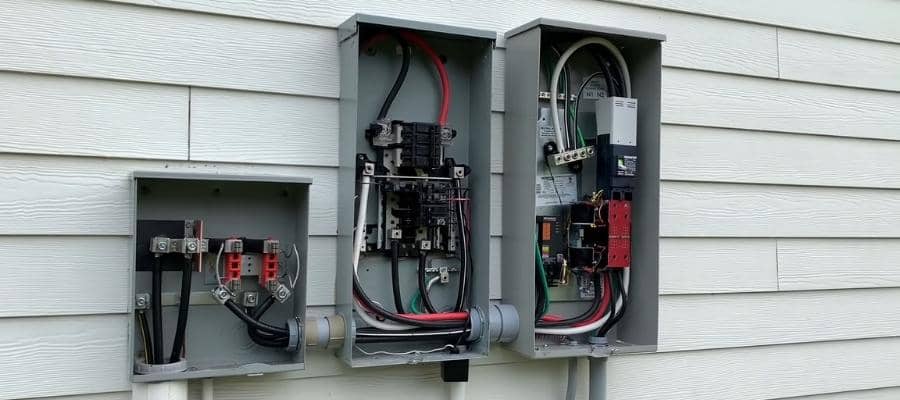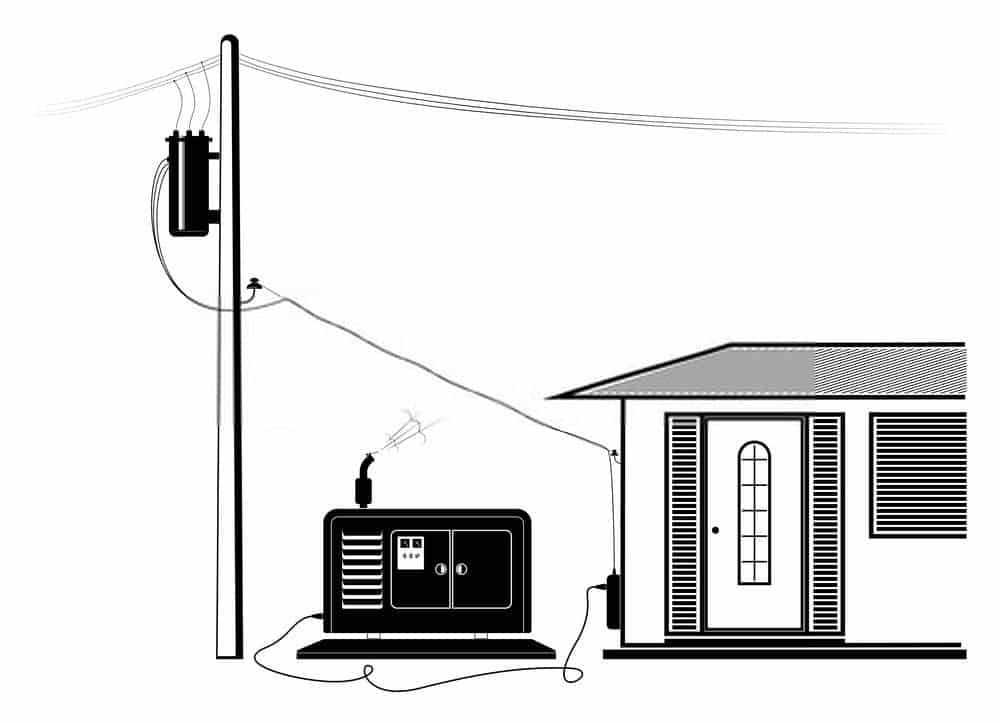
It can be tricky to connect generator to house panel without transfer switch. When it comes to running a home generator securely, a transfer switch is essential (and, in most cases, a legal requirement).
The transfer switch separates the electrical load, enabling you to run your home on either city or generator power without having to switch between them. This keeps energy from your generator from spilling outside into city power lines, putting persons working on those lines at risk during a power outage.
The easiest and safest way to utilize a generator to power your house is through a properly fitted transfer switch. However, generators with built-in transfer switches are more expensive, and there may not be enough time for an electrician to install one in an emergency.
In the case of an emergency, here are instructions on how to hook a generator to your house without a transfer switch.
Is a Transfer Switch Necessary for Generator Hookup?

While it is strictly not required, you can use generator without transfer switch, but there are numerous reasons why having one installed in your home is highly recommended when you connect generator to panel without transfer switch.
The National Electric Code requires you to have a properly fitted transfer switch when utilizing a portable generator to electrical power equipment in your house.
This is particularly important if you intend to sell your house in the near future. When not installed properly, it might result in code violations.
It is the safest method of connecting your generator to your home. Back feed can occur when extension cables are used. This raises the risk of electric shock or fire, both of which can result in significant injury or death, or property damage.
Also, most of our electrical appliances, such as water heaters, air conditioners, and furnaces, are connected; an extension cord cannot be used to connect them to the generator.
Furthermore, in the case of a blackout, fumbling with extension cables to connect your portable generator should be the last thing on your mind.
A transfer switch will allow you to power the house quickly and safely during a power outage.
WARNING: Connecting a generator to a house without a transfer switch is dangerous. Transfer switches are costly to buy and install, but they are necessary for the proper operation of a home’s electrical system.
Transfer switches are recommended by the US Department of Energy. Your state and municipal disaster management agencies, as well as local utility providers, may have their own recommendations you need to follow.
There’s also the issue of liability. If you do unpermitted work on your system, you will be held forever responsible for any injuries or damage caused by your actions. If you have a fire, your insurance company may refuse to cover you. It’s simply not worth it.
Furthermore, because such switches allow load shifting, a compact generator may power your heater, refrigerator, and other appliances depending on whatever circuit you select.
How to Hook up Generator to House without Transfer Switch – Things You Will Need
An Interlock Kit
The interlock kit must be compatible with your generator’s specs and model. An interlock kit is less effective than a transfer switch, but it is less expensive.
When the electricity goes out, simply plug your generator into the same outside outlet as before. The outside outlet, however, does not connect to a transfer switch; instead, it connects to your old circuit panel.
The interlock kit is a metal bracket that is mounted on your control panel. When installed, the interlock prevents you from turning on your service panel’s main cutoff switch while the generator is running. When power is restored, the interlock is moved back to its original position. As a result, electricity only goes in one way.
An electrician could tell you if an interlock complies with your local building requirements and if it is compatible with the electrical system.
Safety Equipment
A voltage stick, protective eyewear, a pair of steel-capped work boots, and sturdy work gloves are all necessary.
Wires
At least three wire sets of 10-gauge wire are needed for most cases. Be sure to get colored wires so that you can easily identify them during use.
Inlet Plug
In order to connect your generator this way, you need a large round plug. It is important to check the generator’s amperage rating and ensure your plug will fit the generator.
Breaker
You may not need a new breaker if you have several empty spaces on your existing breaker panel, but most installations do need a new breaker.
Make sure your home and generator have the right breaker. It is sufficient for most homes to have a 30-amp double-pole breaker, but make sure that it is compatible with your generator also.
How to Connect Portable Generator to House without Transfer Switch – Follow These Steps
Our recommendation is to hire an electrician. What you are doing is dangerous, especially if you have no experience with electricity. It is strongly advised that you consult a licensed electrician even if you have all of the tools and materials.
The following steps show how to connect generator to house without transfer switch by using a using an interlocking kit:
- Step1. Switch off all circuit breakers, both the main breakers and branch breakers
- Step2. Put the interlock plate into place. Your breaker’s controls can easily be covered by these metal plates.
- Step3. To connect your generator to your inlet plug, use the generator’s power cord and kit wiring.
- Step 4. Start your generator and turn off the breakers on all essential appliances. Avoid overloading your generator by using more than its rated continuous wattage.
Transfer Switch vs. Interlock – Which Is Better?
We can safely guarantee that a transfer switch will be a superior long-term choice for connecting your portable generator to your home. Transfer switches are considerably safer, and they also give numerous breakers for better energy management in your home.
For legal and safety reasons, you should always consult an electrician before buying or installing any parts, regardless of whatever technique you use. A qualified person can also assist you in accurately identifying the appropriate capacity devices for your energy needs.
Read Next:
